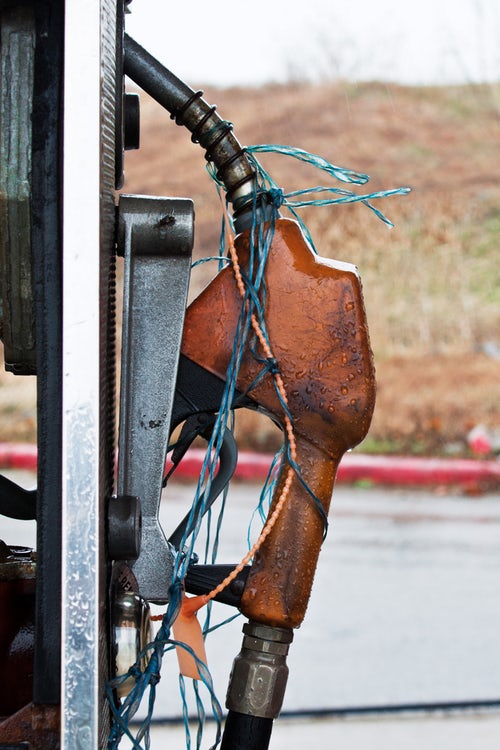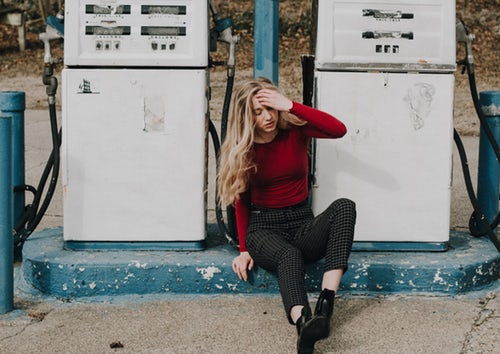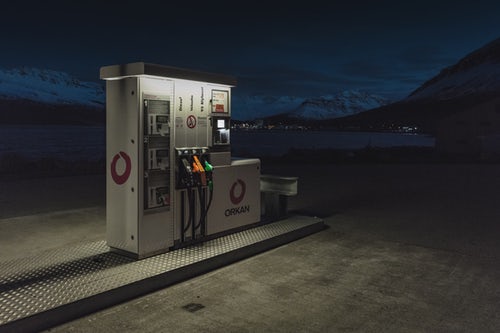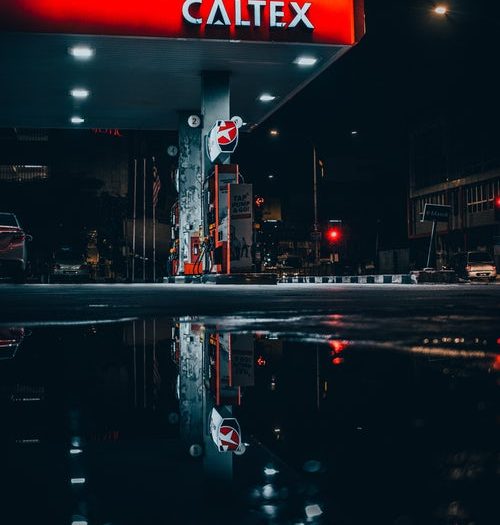FILLING THE TANK used to be relatively straightforward, but these days, pulling into a service station immediately means you need to make a number of decisions.
Like most people, you are probably confused about the vast range of fuels on offer, and just to ensure total confusion, retailers use different labels for their fuels.
While using a lower or higher-octane petrol than specified won’t cause any problems (apart from some unnecessary pain in the wallet), filling a petrol car with diesel or vice versa certainly will cause major headaches.

The first thing to understand is what is meant by the various fuel labels.
- Unleaded (ULP). This is the recommended fuel for most passenger cars in Australia, although increasingly, manufacturers are specifying a higher RON (Research Octane Number) fuel. Normal unleaded is rated at 91 RON. (The higher the RON, the more the fuel is able to resist “knocking” which is the uncontrolled detonation of fuel in the engine. Different engines need different RON ratings. If an engine is run on too low an octane rating, you may hear a pinking noise as the fuel detonates at the wrong time in the cylinder. While this shouldn’t cause any immediate harm to your engine if you refuel with a lower octane fuel than recommended, it will result in decreased fuel efficiency and, over time, some damage.)
- Premium (PULP). More modern cars are designed to run on fuel with a minimum RON rating of around 95. This is especially true for European or high-performance cars. While it varies, PULP usually comes at around a 10-cents-a-litre premium. Using this fuel in an engine designed to run on 91 RON certainly won’t cause any harm, but neither will it result in any measurable benefits. Some people believe PULP will deliver better performance or cleaner running. It won’t.
- Ultra Premium (UPULP). UPULP has an octane rating of 98, and is the highest octane unleaded fuel generally available. Some high-performance cars specify 98 (or higher) RON and this may be a consideration before you purchase since UPULP is not always available in every service station and comes at a significant price premium (usually 14 cents a litre or more over ULP).
- E10. E10 is a blend of 90 percent unleaded and 10 percent ethanol. It is often promoted as a “greener” alternative. There is still some concern about the effect ethanol may have on engine components. Most new or near-new cars can safely run on E10, but for owners of older cars (especially those with carburettors rather than fuel injection) the best advice is to avoid it. While E10 is usually between one and four cents cheaper than ULP, it has a lower energy content meaning it isn’t as efficient and your car will probably use slightly more.
- E85. Currently the fuel being used by certain race cars and once heralded as the way of the future. E85, as the name implies, is a blend of 85 percent ethanol and 15 percent unleaded. It is only suitable for a very limited number of cars and not widely available. E85 produces about 26 percent less energy than regular ULP. Check your owner’s manual to see if your vehicle is suitable for E85 before using it.
- LPG. Many vehicles have been converted to run on LPG (liquid petroleum gas) which is a mixture of propane and butane gases, plus an added chemical to make it possible to smell the product should there be a leak in the tank (LPG in its natural form is odourless). Previously, a few manufacturers offered mainstream models designed to run exclusively on LPG but they proved not very popular and have been discontinued. Cars converted to run on LPG can usually run on LPG and switch to regular unleaded when necessary. The popularity of LPG conversions has dwindled, due to the high cost and reduced engine efficiency. LPG is widely available and usually for around half the price of ULP, but even at this price, it will take some time to recoup the initial cost. LPG is 30 percent less efficient than ULP.
- Diesel. Most trucks and many SUVs run on diesel fuel. Increasingly these days, so do many other vehicles, from small hatchbacks to luxury saloons. This is because they are more efficient than petrol engines and have better engine durability. Diesel engines also deliver more low-down torque (pulling power) making them very suitable for off-road and towing applications. However, it isn’t always that simple. Short journeys in diesel-fuelled vehicles will result in the particulate filter clogging up (it takes a good run for the engine to reach a suitable temperature to burn off the particulates). Also, even though things have improved, some diesel engines can be clattery and feel less refined than a petrol equivalent. Also worth considering before deciding to go the diesel route, servicing costs are usually higher and because diesel engines run at higher compression, there is a more noticeable thump with engines that automatically shut down (stop/start) when stationary. Diesel fuel in Australia is generally more expensive than petrol, although the prices can be much the same when ULP prices are at their peak.
- Premium Diesel. At around three to four cents more than regular diesel fuel, it is to be hoped that oil company claims that Premium Diesel keeps the internals of a diesel engine cleaner are to be believed. Best advice is that Premium Diesel is simply regular diesel with some additional cleaning additives.

Okay, so now you know the definitions of different fuels, what happens if you put the wrong fuel into your vehicle?
There are four main types of fuelling mistake: putting petrol into an engine designed to run on diesel, putting diesel fuel into an engine designed to run on petrol, using premium fuel in cars that don’t need it, and using regular unleaded fuel in cars that specify premium or ultra premium unleaded.
- Petrol into a diesel engine.
There is no more serious refuelling mistake than filling the tank of a diesel-engined car with petrol and then driving off. And it’s easy to do, because the petrol pump nozzle is smaller in diameter than a diesel nozzle, so there’s nothing to stop you inserting that diesel nozzle and pumping away.
The problem arises because petrol acts as a solvent in a diesel engine (diesel fuel is actually a form of lubricant in a diesel engine). The resulting reduced lubrication process causes damage to the diesel engine’s high-pressure fuel pump. Catch it quickly (before you drive off ) and you might face a $600 bill to flush the system and change the filters. But if you don’t act promptly, you may be looking at a repair bill of many thousands of dollars.
If you realise you have refuelled a diesel-engined car with petrol and haven’t driven off, whatever you do, don’t start the engine. Remove your car from the service station by pushing or towing and then arrange to have the tank drained. If you haven’t realised and do drive off, the engine will probably run for a short time before it starts making loud rattling noises, or stopping altogether. Stop the vehicle and arrange for it to be towed to a mechanic for repairs.
Some vehicles now incorporate a nozzle that stops you filling up with the wrong type of fuel. A good alternative is an after-market device that replaces your existing fuel filler cap. It contains a locking flap which can only be released by a diesel-sized nozzle. At less than $100, it is cheap insurance.
- Diesel into a petrol engine.
Less common is filling the tank of a petrol-engined car with diesel fuel. The spark plugs in a petrol engine cannot ignite diesel fuel, so the plugs become fouled and eventually fail to fire. Depending on how much diesel you have mixed with the petrol that was in the tank before you refuelled, you will find that the spark plugs almost immediately foul (if the engine is running on almost pure diesel) or, if there is less diesel than petrol, the engine may continue to run, but with volumes of smoke from the exhaust pipe, eventually causing damage to the spark plugs.
As with the petrol into diesel scenario, if you realise before driving off that you have used the wrong fuel, don’t start the engine. Push your car away from the forecourt and arrange to have the tank drained and flushed. If it needs to be removed to a repairer, have it towed.
- Fuelling with higher octane.
Perhaps as a result of clever marketing and promotion, many motorists persist in filling their cars with a higher-octane petrol fuel than is recommended (you can usually find a recommendation on the inside of the fuel filler flap, and in the owner’s manual). The reasons for this, they claim, is that higher octane fuel delivers higher power and better fuel economy. They are deluding themselves, and paying a premium for doing so. Unless the engine is specifically designed to run on 95 or 98 octane fuel, the use of such fuels will make little if any difference.
Before filling with a higher-octane fuel, check your owner’s manual to see if it is required. Inside the filler flap, the recommendation may state that a “minimum” octane rating is specified, in which case, fill with that octane rating and no higher.
The good news is that using a fuel with a higher-octane rating than specified will do no damage to your engine.
- Filling with lower octane.
While using a fuel with a higher octane than specified won’t cause any problems, regularly filling with a lower octane fuel than specified may result in a “knocking” or “pinking” noise from the engine as the fuel detonates inside the engine at the wrong time, rather the burning smoothly. If you fill with a lower octane fuel than the engine requires, many modern engines will simply compensate, using computer controls to change the timing (thus ensuring the engine runs without knocking or pinking, but less efficiently than if it was running on the recommended octane).
Not all engines are fitted with this computer wizardry, so they will struggle with the lower octane fuel. While it probably won’t cause any immediate damage to the engine, over time there is the potential for harm to be done, and you will notice a decrease in fuel efficiency.
Read your owner’s manual and don’t be tempted to save a few cents by regularly and consistently using a lower octane fuel than the manufacturer recommends. And bear in mind that doing so may void your warranty.

